September 14, 2024
Less Lawn, More Wildlife, Lessons Learned
Not so long ago, Natalie McAnarney took a hard look at her new backyard. Its stark lawn and blank fence lacked personality and didn’t invite much interaction. An Army Veteran and a physician assistant, she knows the health benefits of spending time outdoors. So, she explored how to grow a garden with native and adapted plants.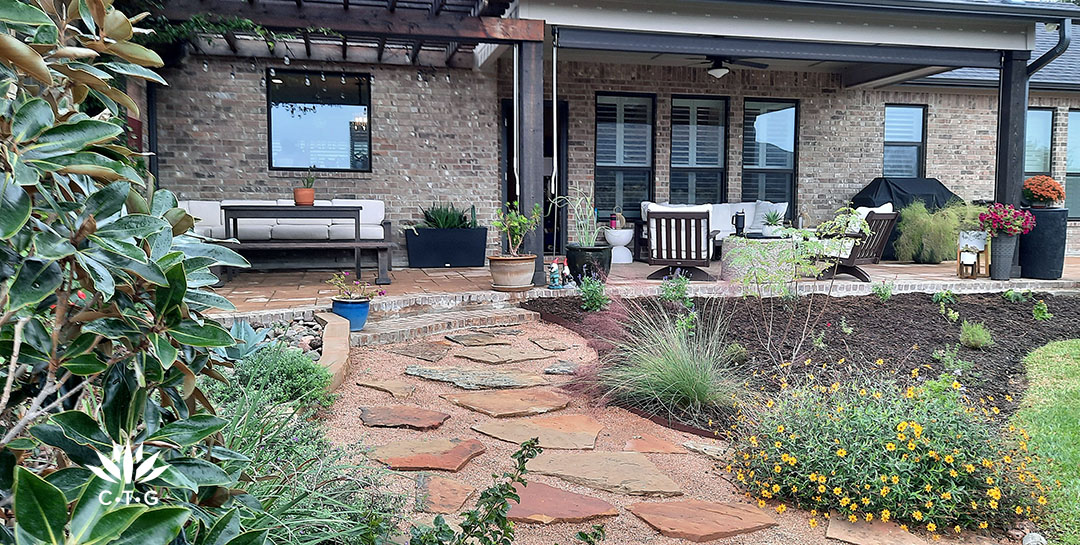
“Initially, I just wanted things to be pretty, and then I wanted it to be pretty and sustainable. And then eventually I got to the place where I wanted to support the wildlife,” she told us last November on a nippy, misty morning.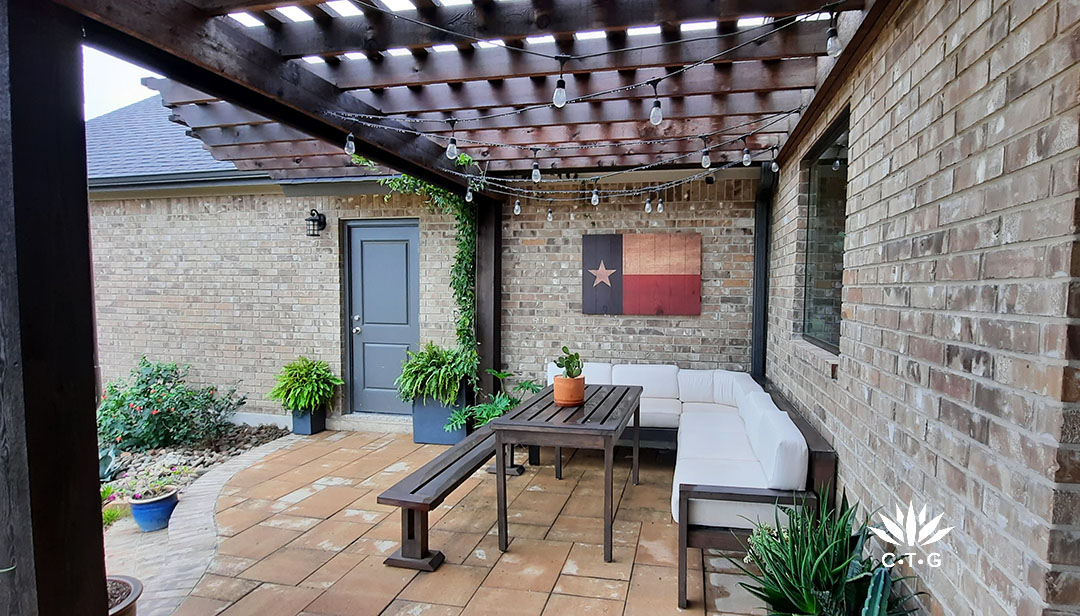
But that didn’t happen overnight. When Natalie and her husband bought their house near Killeen in 2019, it came with a builder grade yard. With a full-time job, an active young family, and a priority-minded budget, she took things one step at a time. First on the list: a long, wide patio with plenty of comfortable furniture, since the whole family loves to be outside.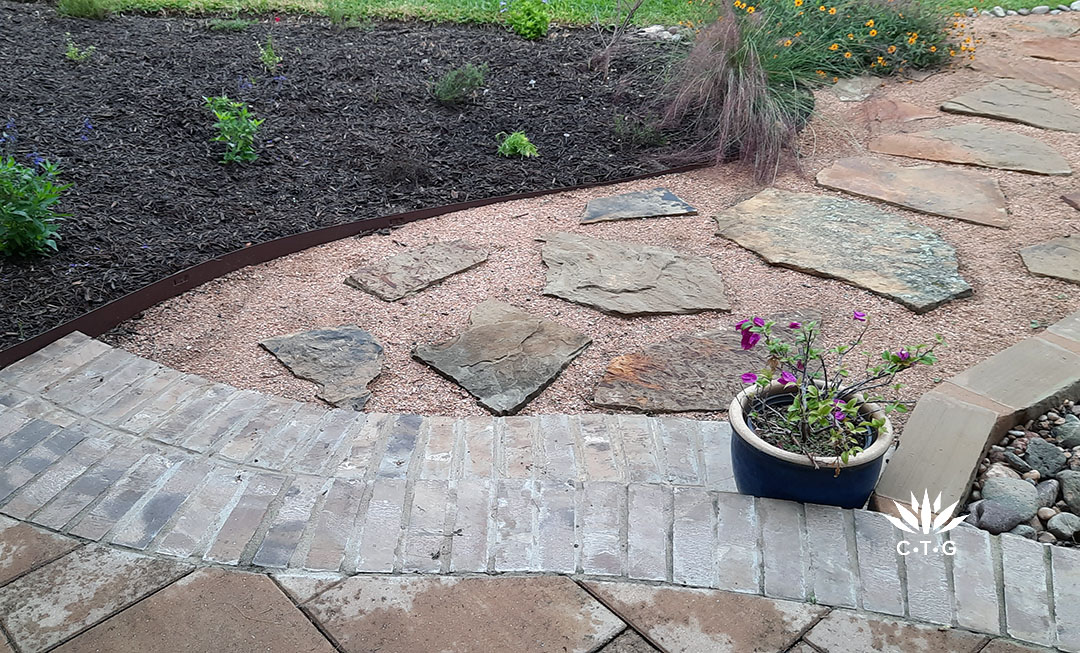
Next came the hardscape where she beautifully united different materials and warm hues from patio tiles and bricks to Oklahoma flagstones on the crushed granite path. Steel edging keeps a mulched, young perennial bed from spilling.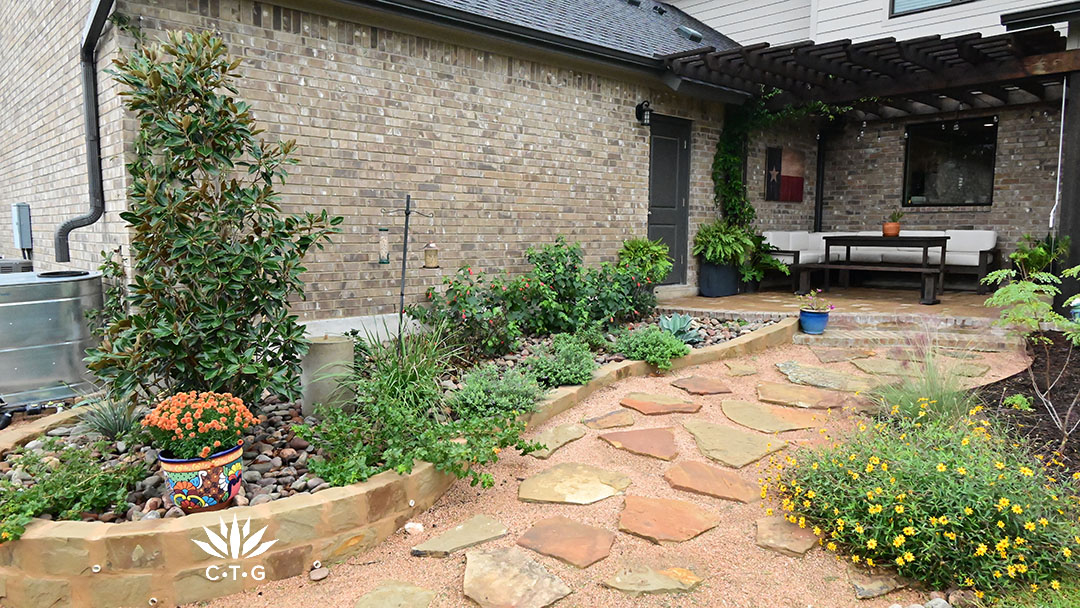
To define a new perennial bed along the house, Natalie chose stacked stones. In 2020, she started planting. Plants have changed and she keeps editing (as we all do!). A partial list from our visit: ‘Little Gem’ magnolia as an evergreen anchor, along with lantana, potted chrysanthemum, crossvine, butterfly iris, dwarf crape myrtle, butterfly iris, crossvine, purple skullcap, turk’s cap, and whale’s tongue agave. She added a small water fountain for birds, butterflies, and bees that stop by for a meal on flowers or seeds. On the right, the yellow is drought-tough native perennial zexmenia.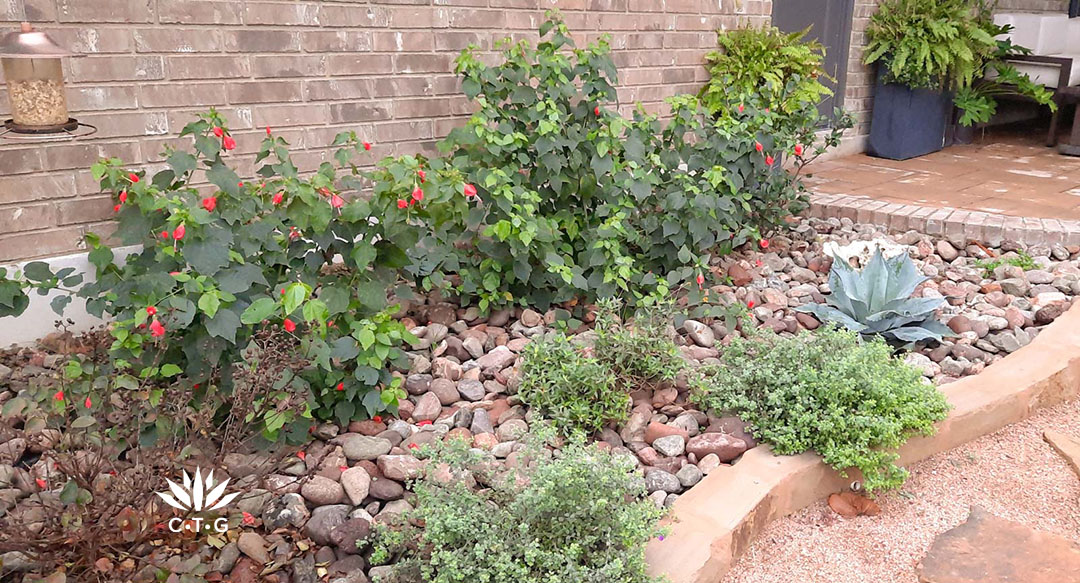
“Just sitting out here is such an oasis away from, you know, the busy life,” she said.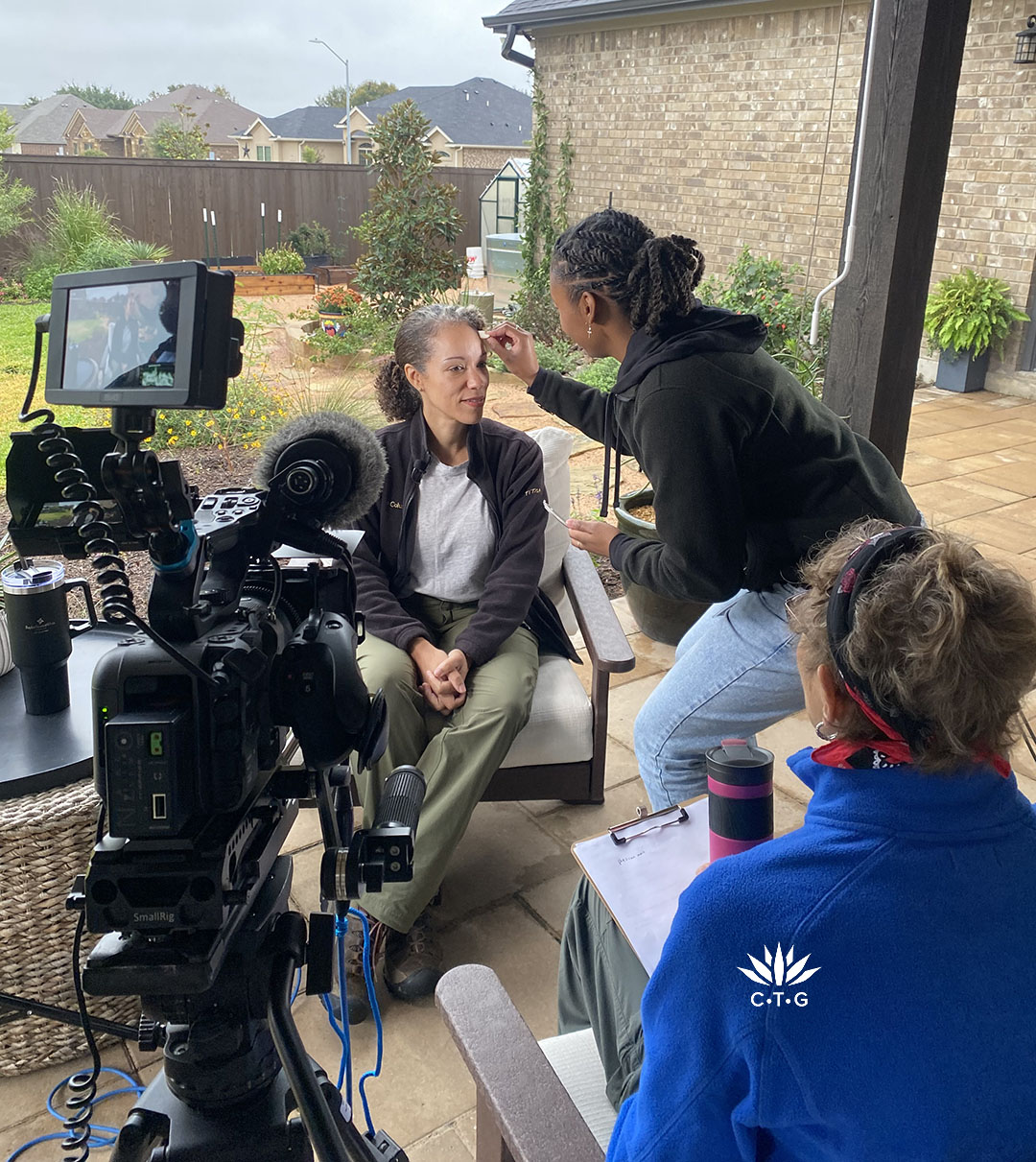
Now a Bell County Master Gardener, Natalie’s creating YouTube videos and Instagram posts to document her challenges and successes. Austin PBS intern Jaida Newhouse and Natalie swapped plant and tech tips. Photo by location assistant Katie Nelson.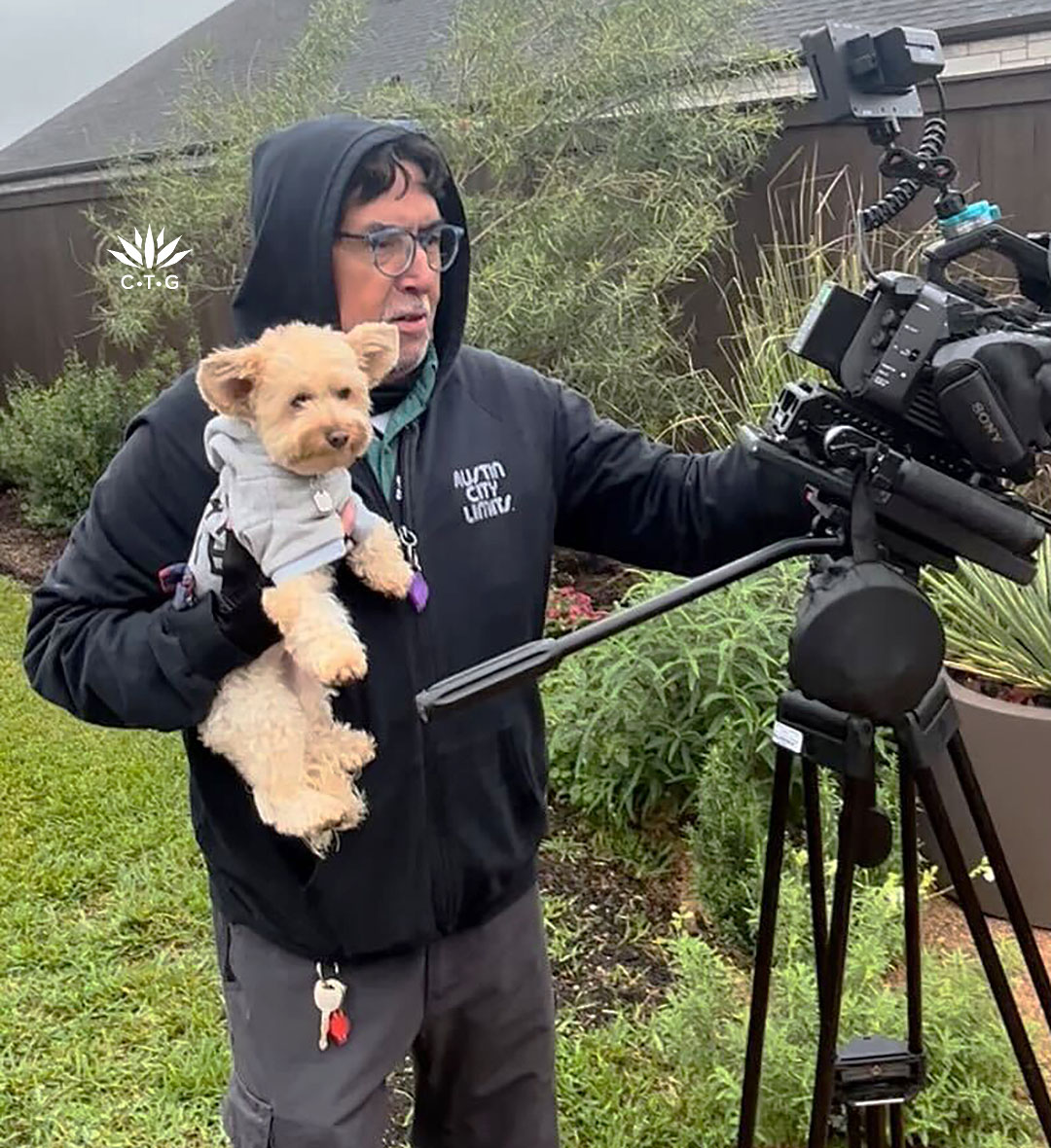
Fluff-fluff Charlie supervised director Ed Fuentes. Photo by Jaida Newhouse.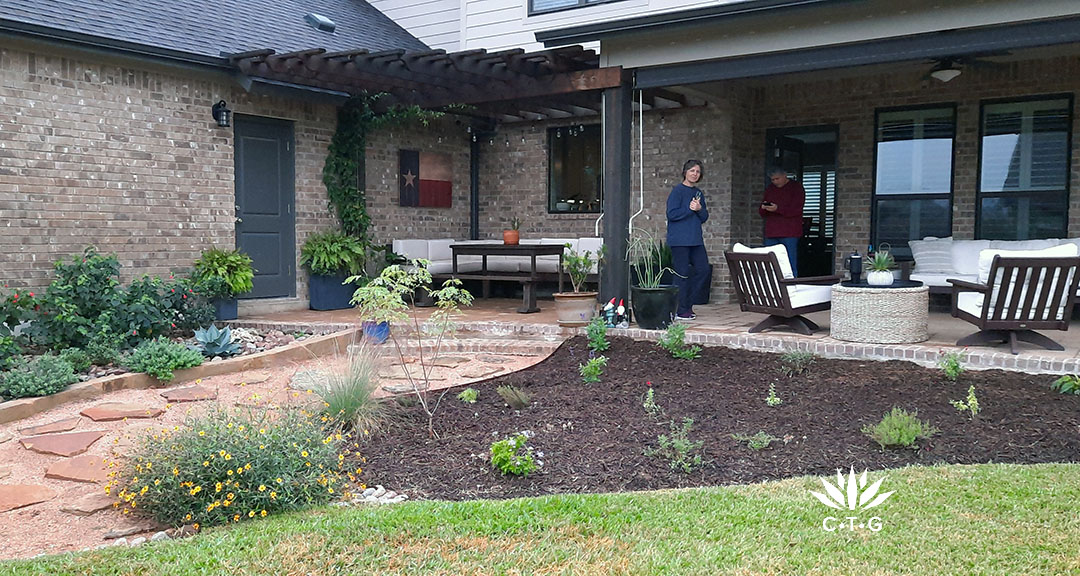
Natalie doesn’t shy away from her mistakes to help others avoid the pitfalls. And she’s always learning, including from friends Jean and Dan Flores–great gardeners themselves.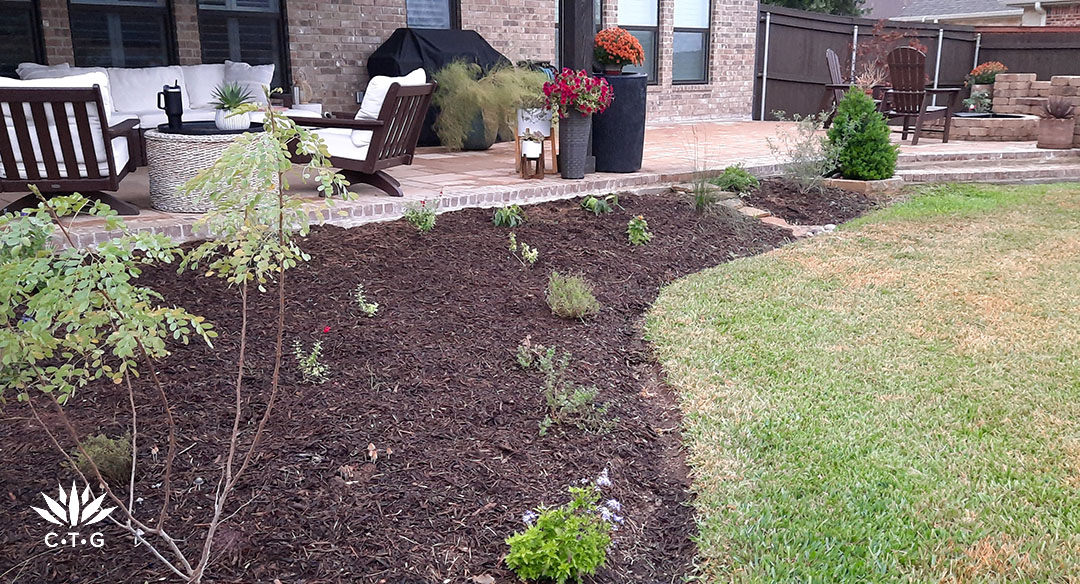
Natalie continues to whittle the lawn, mostly by digging, since her St. Augustine grass is pretty easy to lift up. She has also solarized it; there are many techniques, from plastic to sheet composting.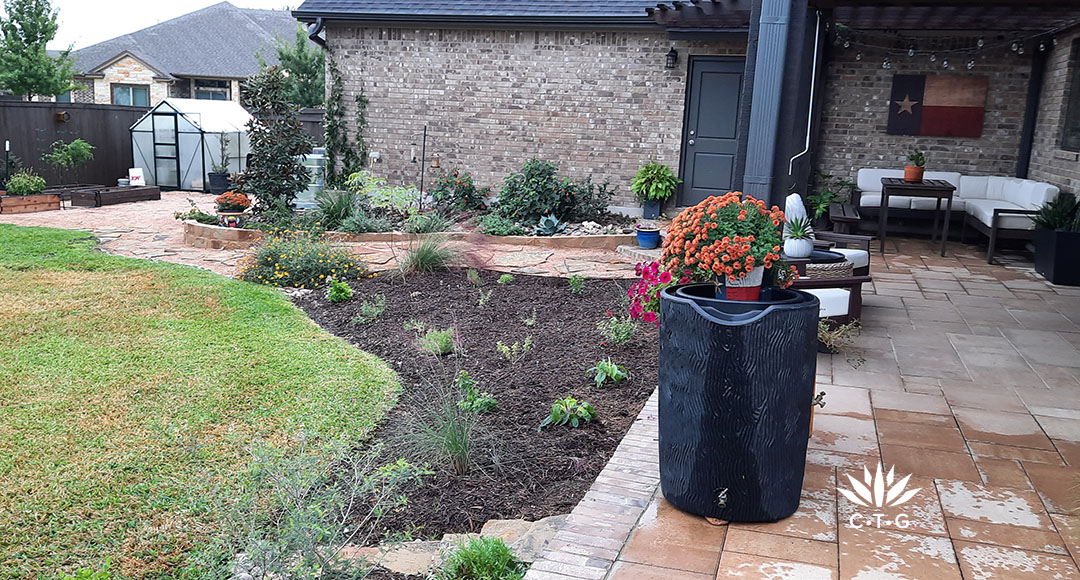
To control runoff, she trenches the border to collect and infiltrate rainwater. As a kid, this was always my job! I continued this practice in my own garden for years, since it’s a tidy look and an unobtrusive border between beds and lawn. But sigh: unless you keep up with it, nature happens, and your trench settles back into the soil.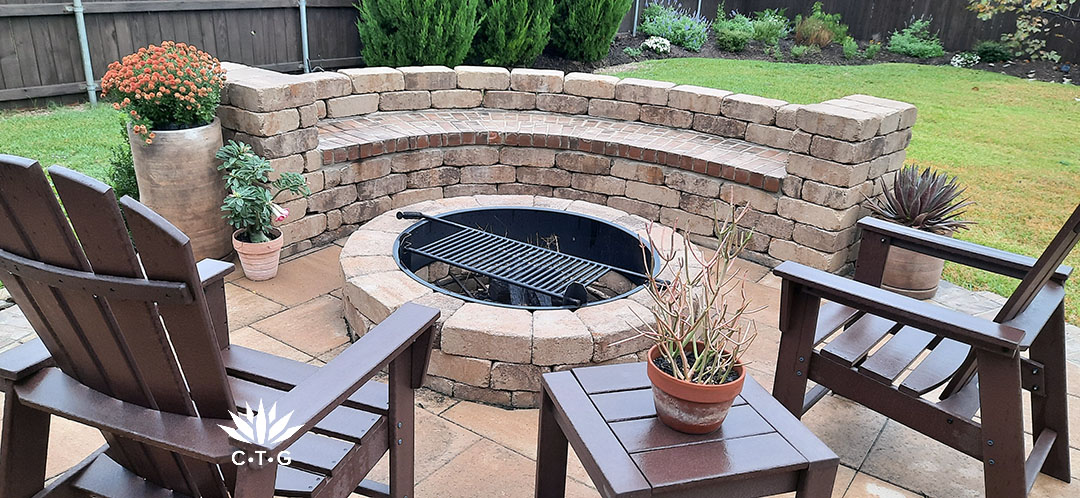
Along the way, Natalie realized that she was creating a sense of enclosure, a garden “that feels like a big hug.”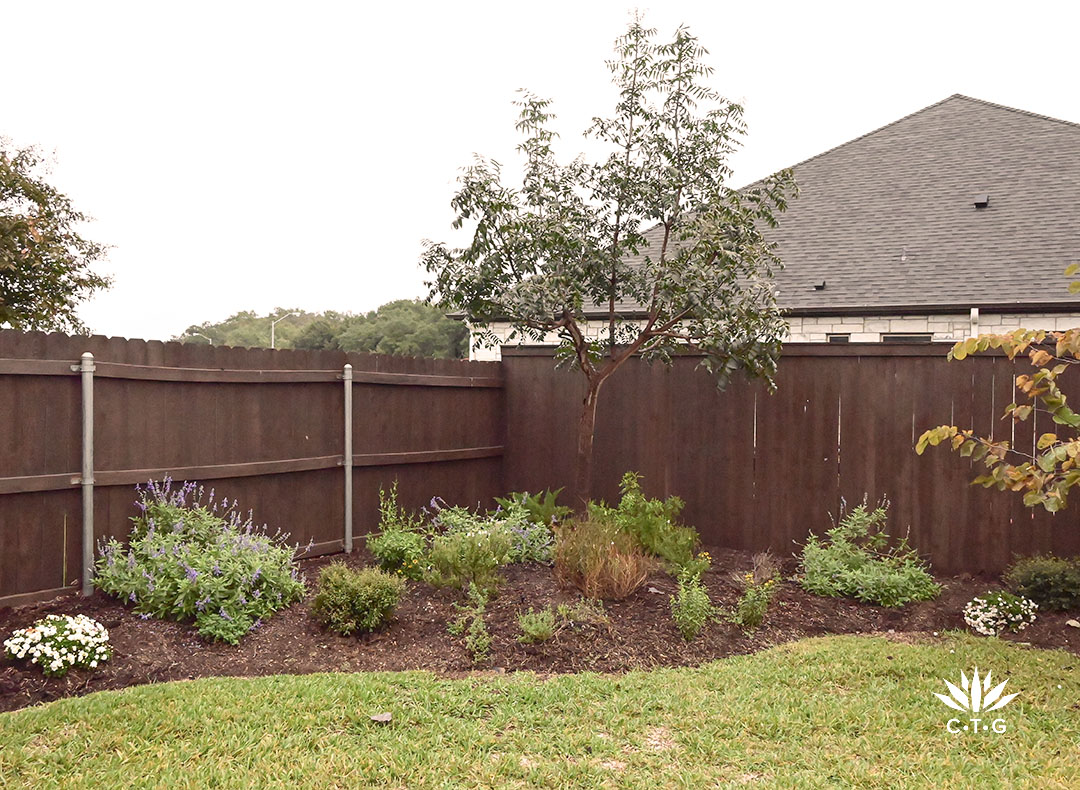
So, she dug out wide borders to embrace the fence, going for curved lines to offset straight lines. Her plants are still young, but eventually they will surround the family with flowers, fragrance, and seasonal changing leaf colors. This spot hosts a Chinese pistache, Salvia leucantha, S. greggii, and various perennials, including fall-blooming chrysanthemums. Small trees ‘Forest Pansy’ redbud and Texas redbud (just out of view) shower early spring with rich pink-red flowers.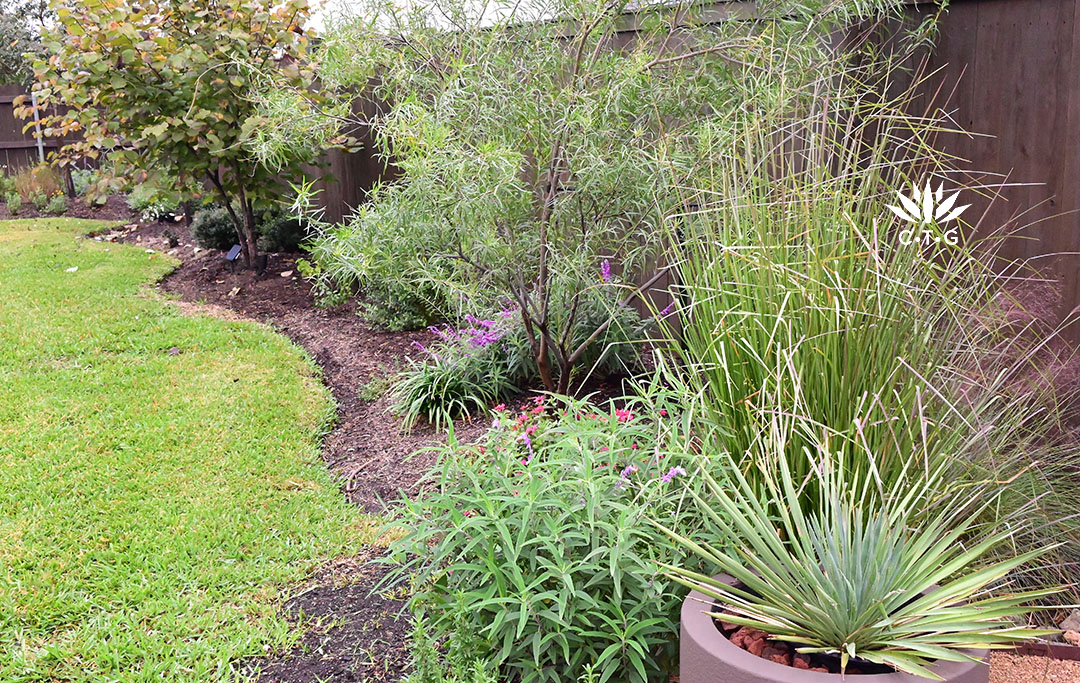
On this side, hummingbirds head to desert willow’s tubular pink flowers all summer. In fall, bumblebees rush Salvia leucantha, here with vetiver and Gulf muhly–all wonderful habitat plants. she’s got desert willow, Salvia leucantha, vetiver and Gulf muhly–all wonderful habitat plants from flowers to shelter. That’s ‘Blue Sentry’ yucca in a container. The Texas redbud peeks out at far end.
Recently, she added her garden to Doug Tallamy’s online Homegrown National Park registry. I registered my garden, too! It’s free and you can sign on with just a few plants. From their site: “The Biodiversity Map is an interactive, community-based visual tool that tracks the total area occupied by native plants. It is designed to be the epicenter of biodiversity regeneration by consolidating and amplifying all the extraordinary work being done by individuals and organizations across the US and Canada.”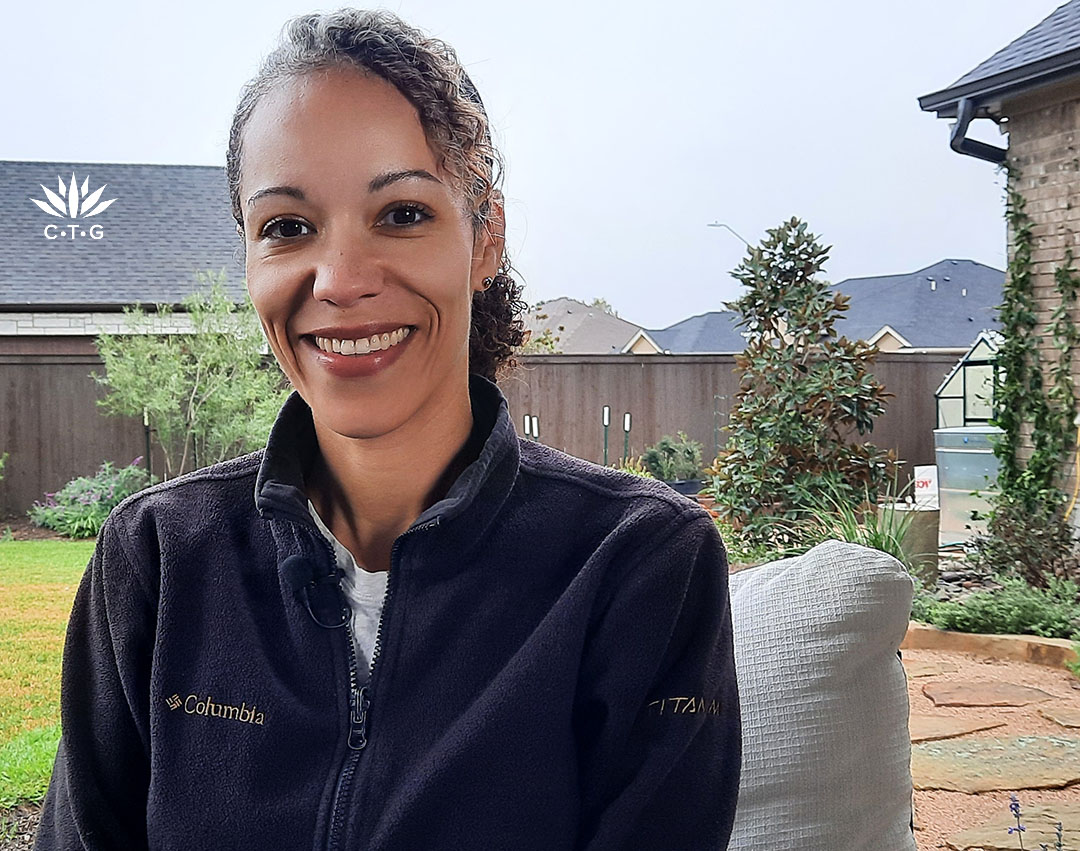
“I do feel, as a gardener, that I have some degree of responsibility of doing this well, because it impacts the food web beyond my yard,” Natalie said. “So I definitely want to learn more about how to steward what I have here, in a way that doesn’t harm that food web at all.”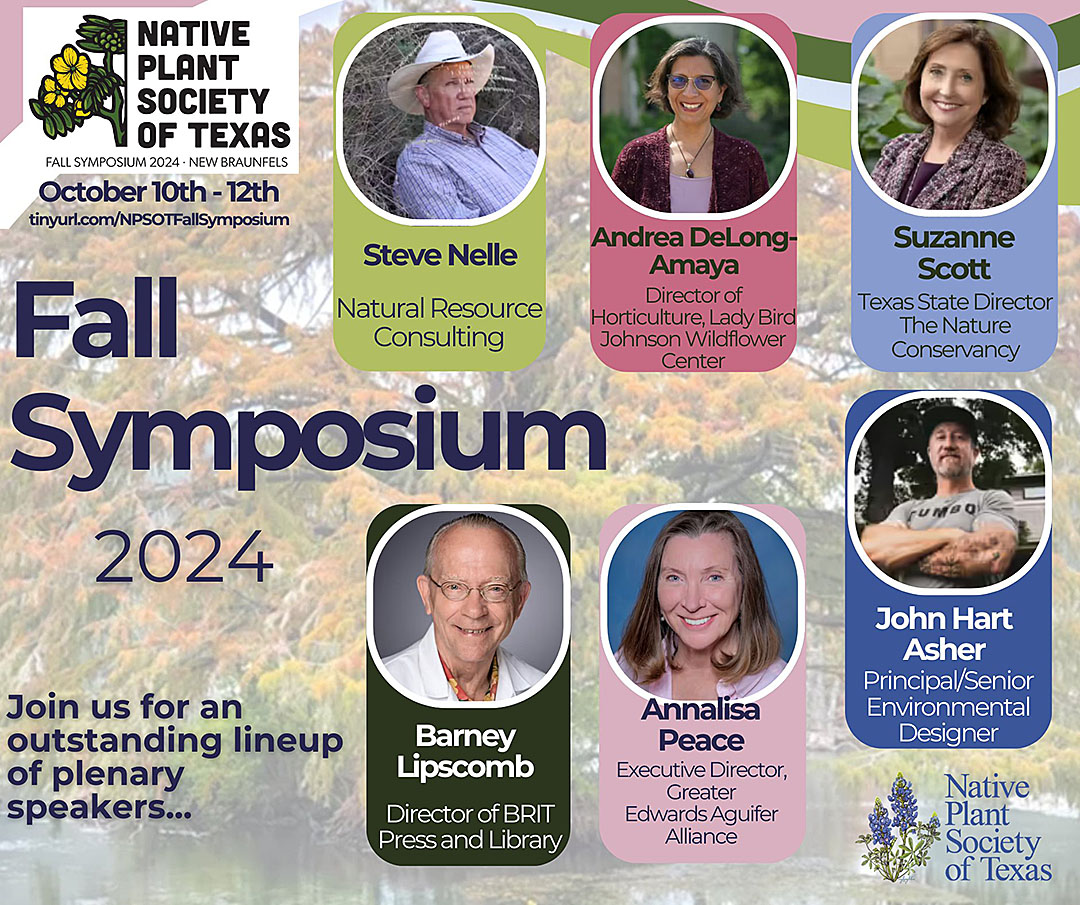
Speaking of native plants and wildlife habitat: Register now for a super duper Native Plant Society of Texas symposium October 10 – October 12! This year it’s in New Braunfels, but there’s an online option, too. They’ve got a great lineup of speakers, including John Hart on pocket prairies Saturday afternoon. NOTE: Registration ends September 23.
Watch Natalie’s story now! (Broadcast on November 9 to honor Veteran’s Day–check local listings.)
Thanks for stopping by! Linda